Johannes Stöffler (1452-1531) was a German mathematician, astronomer, and instrument and clock maker, who from 1507 held the chair of mathematics and astronomy at the University of Tübingen. His most successful work was the Elucidatio Fabricae Ususque Astrolabii, a treatise on the design, construction and use of the astrolabe broadly reprinted between sixteenth and early seventeenth century.
Stöffler’s friend, the mathematician and publisher Jakob Köbel issued the first edition of the Elucidatio in Oppenheim in 1512-13. Despite refined illustrations, this book is typographically rather simple, presenting some fold out pages and paper strips extending beyond the page margins. These extensions provide additional surfaces on which locate some remote points useful in the instrument geometrical construction.
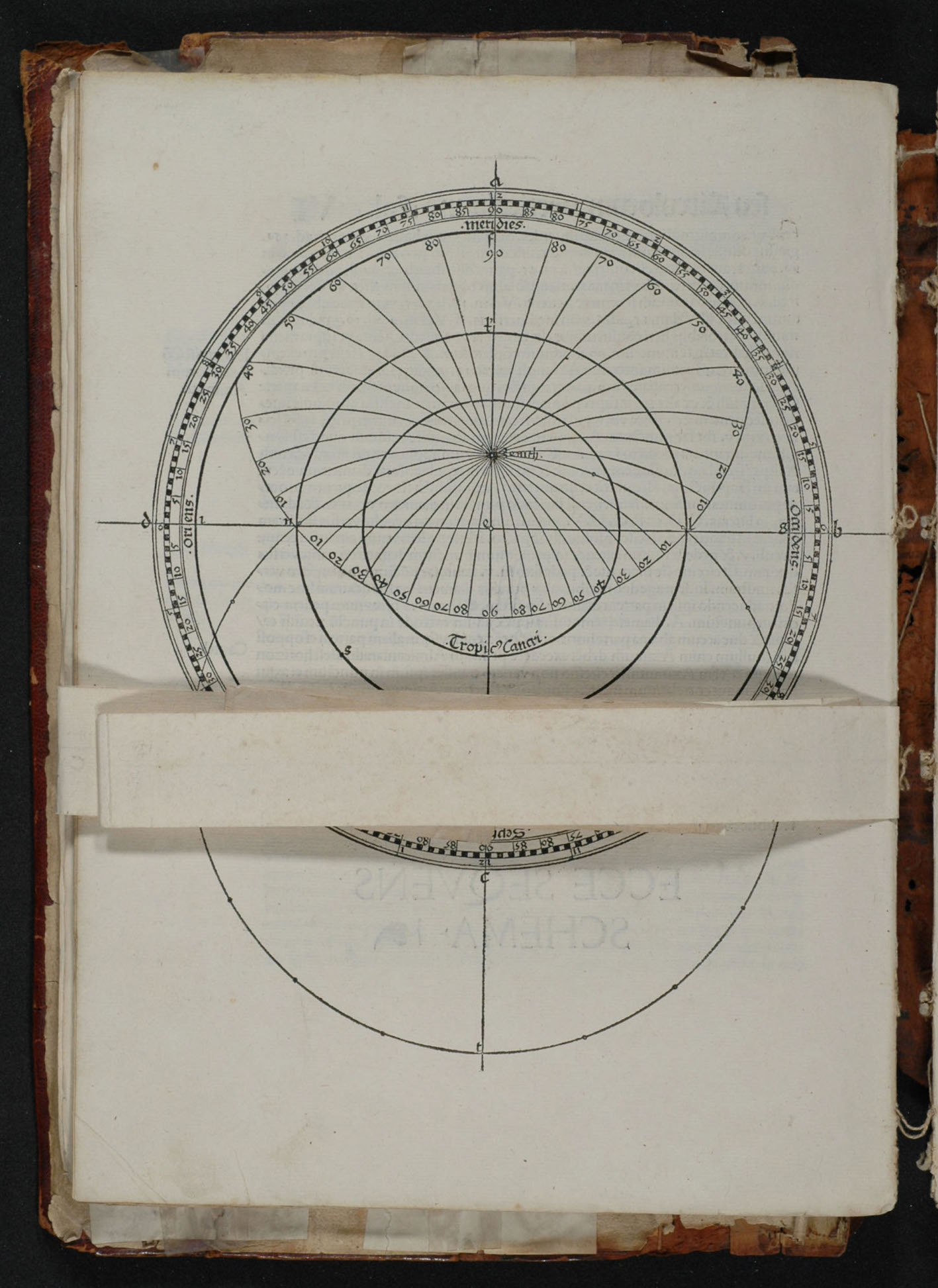

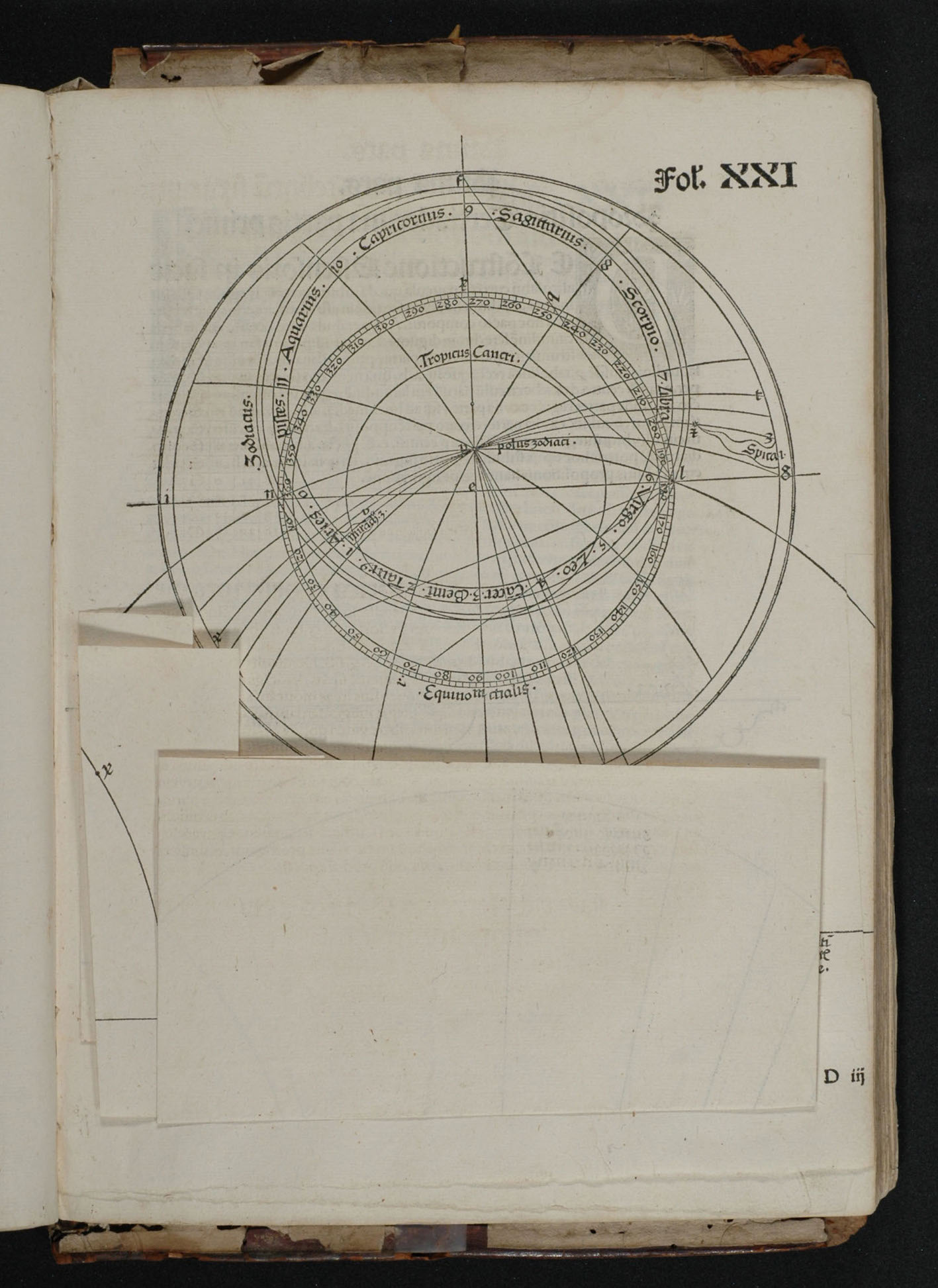
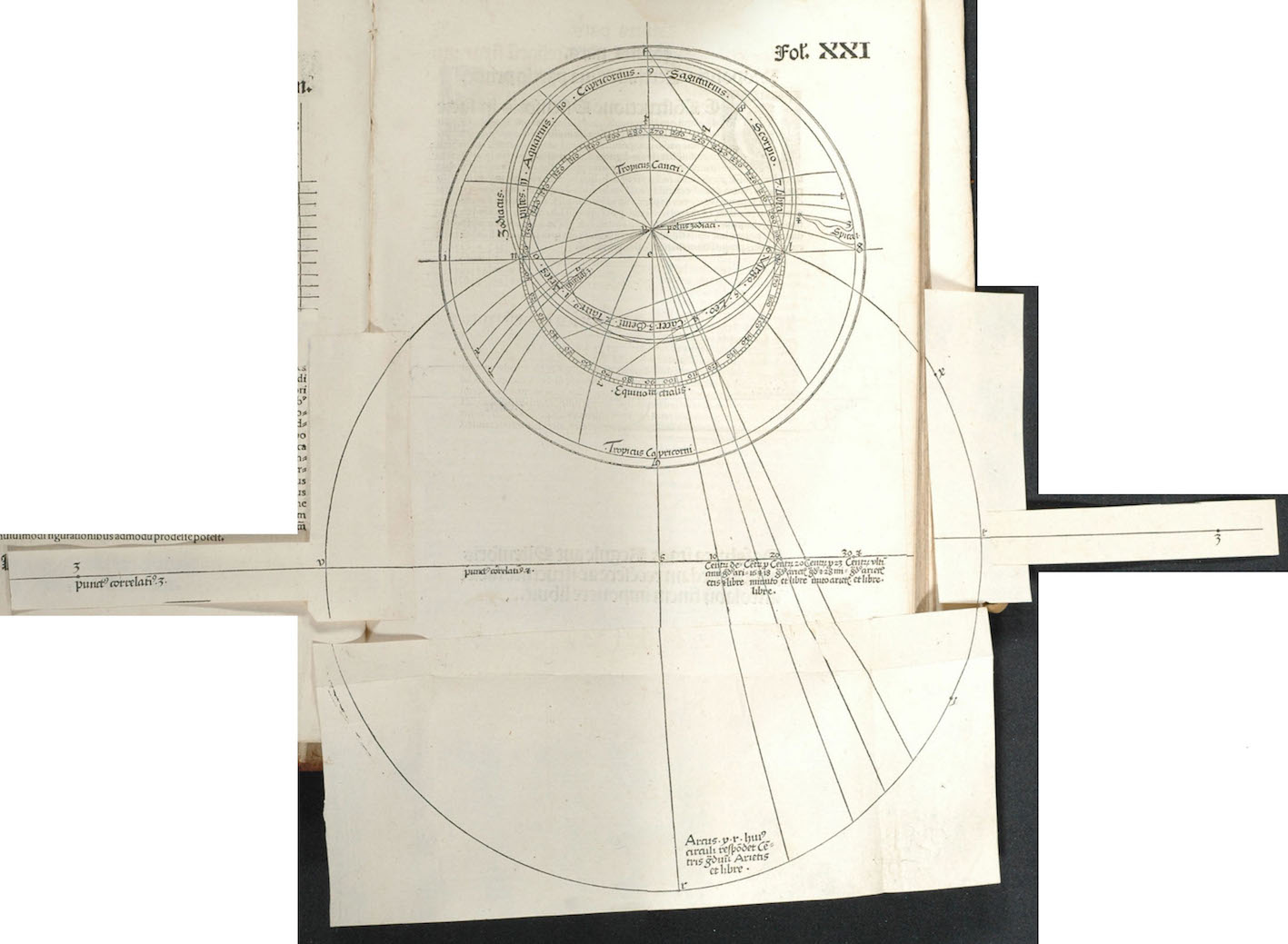
In a posthumous miscellanea of Stöffler’s works - Caelestium rerum disciplinae (Mainz, 1535) -, the editor added three final leaves representing the basic parts of an astrolabe, the mater, the tympan and the rete. Once cut out and mounted, the reader could construct a paper astrolabe to use not in real astronomical observations, but in reading the text and putting the explained principles into three-dimensional practice.
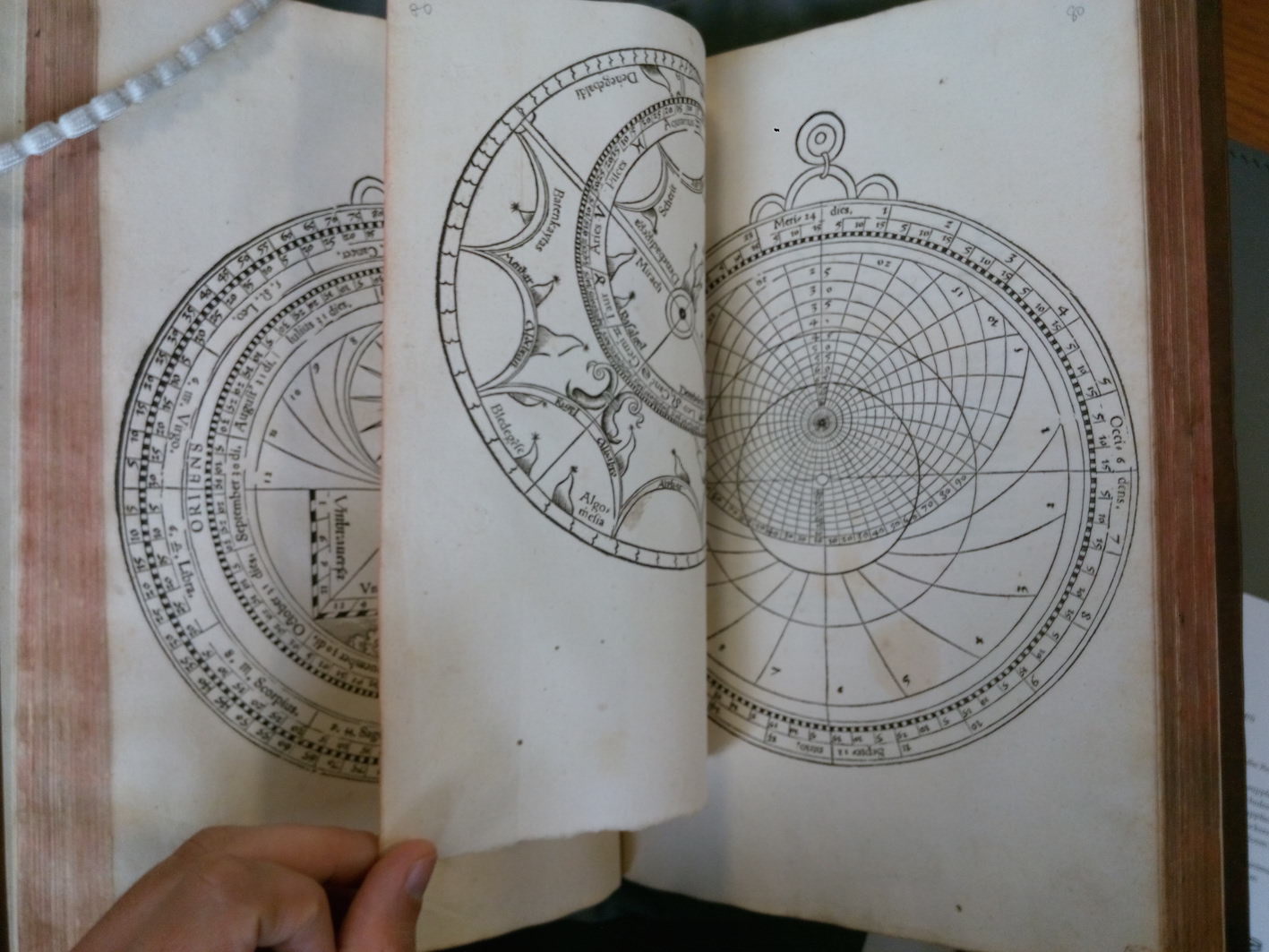
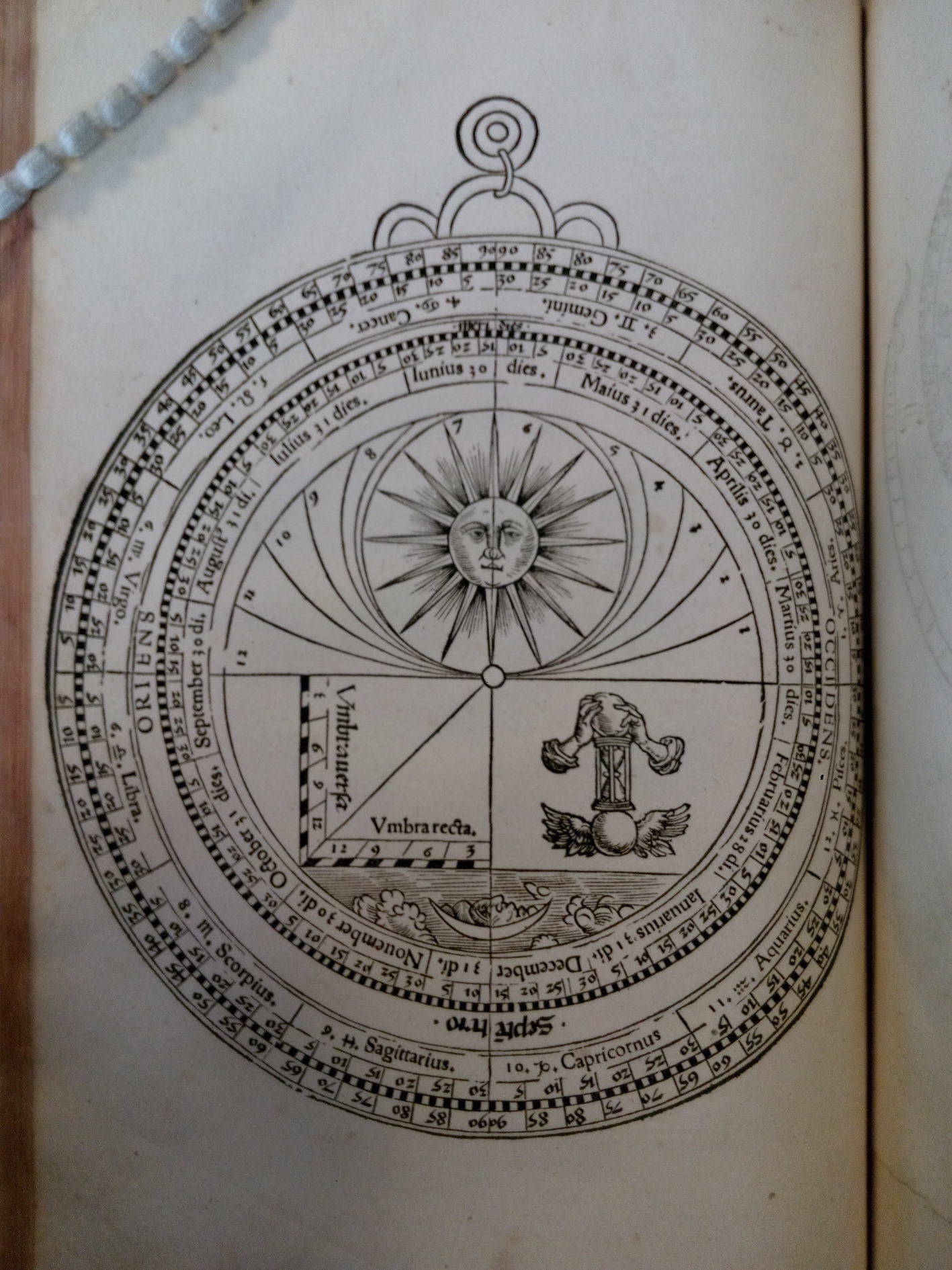
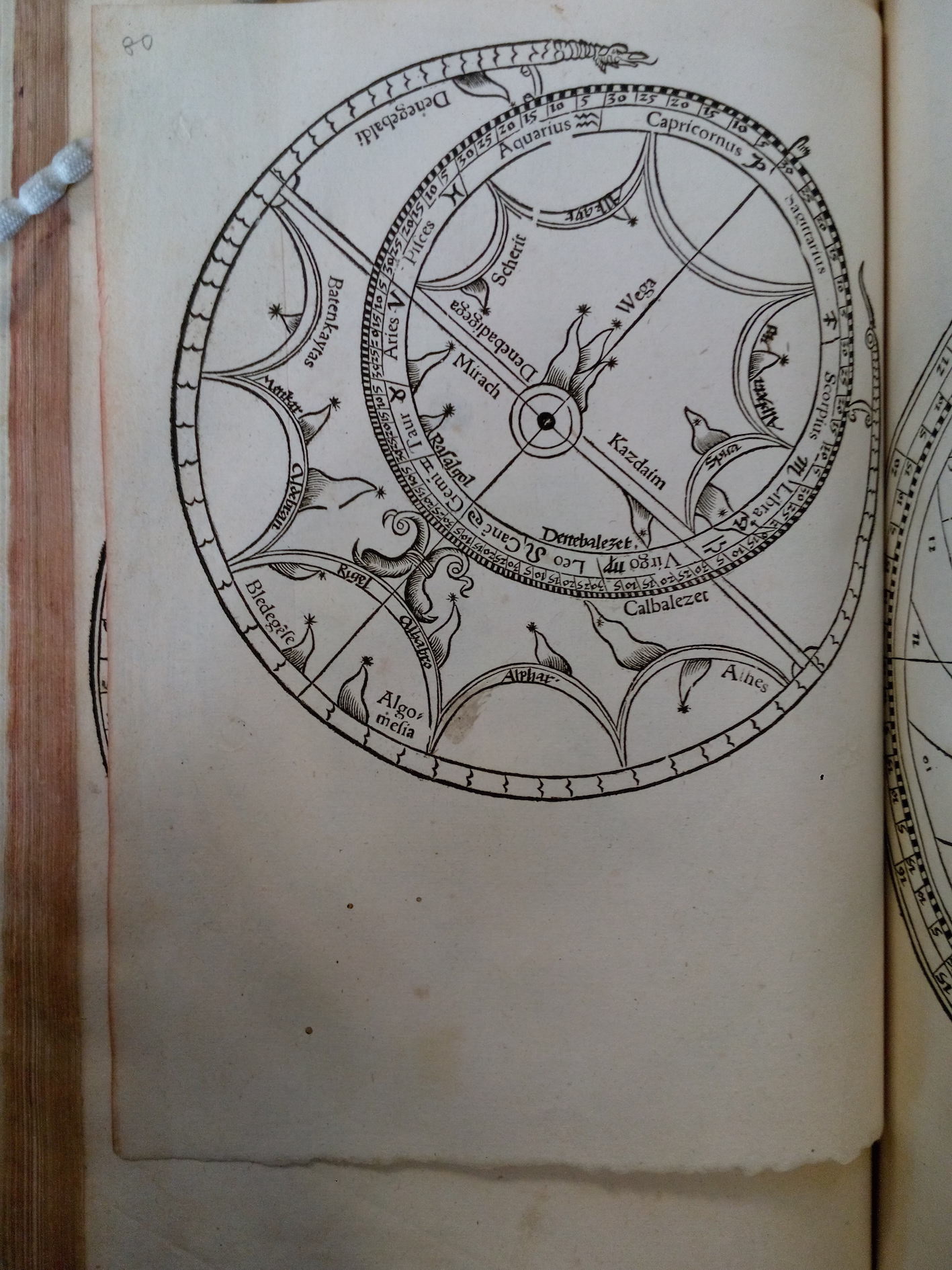
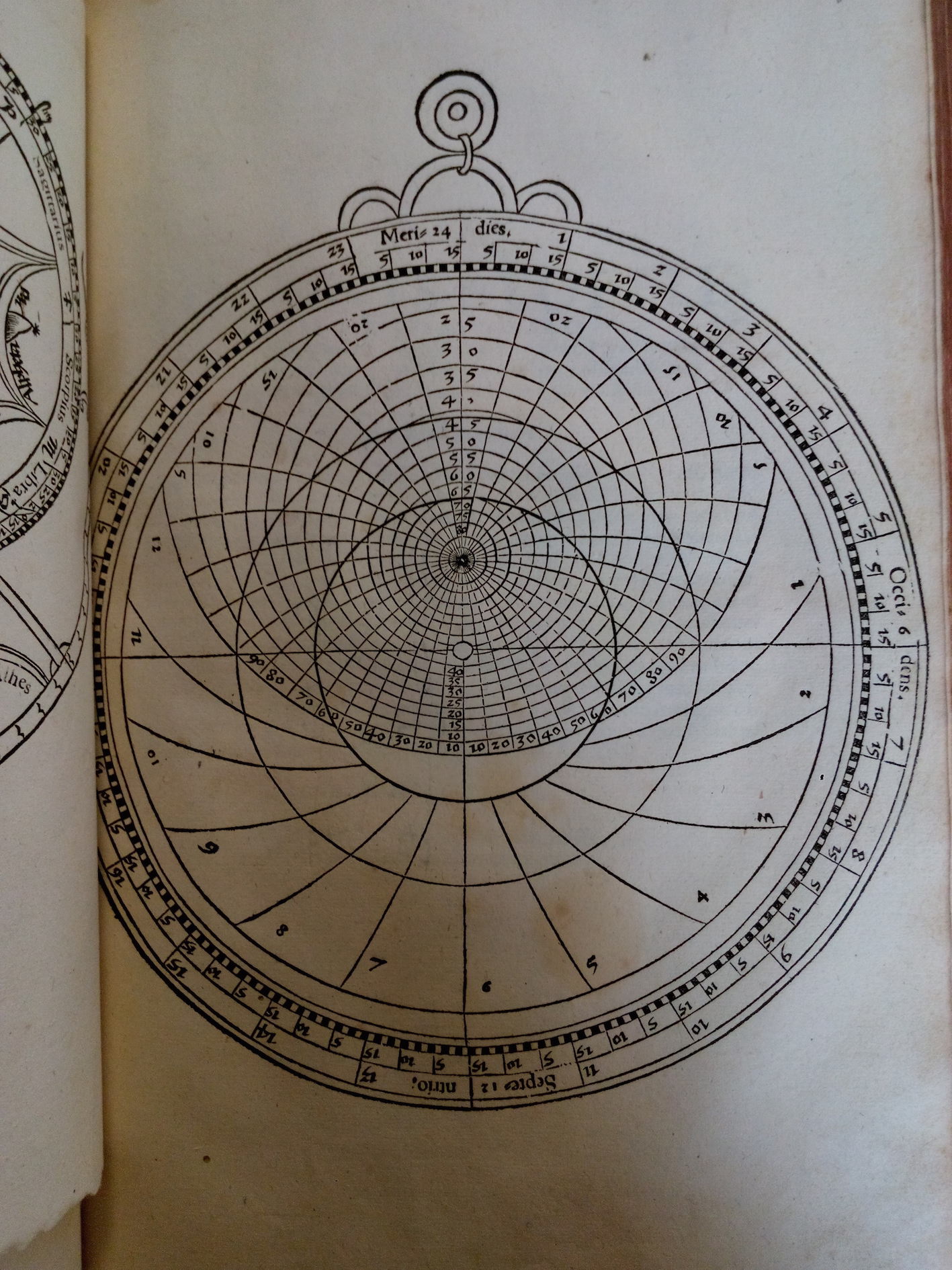
Such kind of paper instruments were often fixed inside books, as for instance in John Blagrave’s Mathematical Jewel (London, 1585).
This demonstrates that a decade after the first printed astronomical treatises with volvelles by Johannes Schöner and Peter Apian, such kind of devices already became a standard so that publishers had to equip with them also re-editions of the older works.
Further reading
Stoeffler’s Elucidatio: the Construction and Use of the Astrolabe: Elucidatio fabricae ususque astrolabii, trans. and ed. by A. Gunella, J. Lambrey (Cheyenne: John Lamprey, 2007).
J.C. Albert Moll, Johannes Stöffler von Justingen: ein Characterbild aus dem ersten Halbjehrhundert der Universität Tübingen, “Schriften des Vereins für Geschichte des Bodensees und seiner Umgebung” 8 (1877), 11-53.
K. Hartfelder, “Stöffler, Johannes”, in Allgemeine Dautsche Biographie, vol. 36 (Leipzig: Duncker & Homblot, 1893), 317.
Database
Astronomical Images “Diagrams, Figures, and the Transformation of Astronomy, 1450-1650”, University of Cambridge.
